First Unitarian Church of Rochester, NY
The First Unitarian Church in Rochester designed by Louis Kahn is an architectural gem with deep historical roots.
by Chris Clemens
I think that we tend to take the things that we see on a daily basis for granted. We think, “Eh, I don’t have to do that today because it’s been here my whole life and I can go someday”. We get a lot of feedback about this blog and hear things like “I had no idea that __________ existed!!”
This blog is about places that have an interesting story and places that we didn’t want to wait until ‘someday’ came to see them.
Get out in your city, go see stuff you haven’t seen before, explore. Too many pieces of incredible history are forever gone and only their story remains with the people willing to tell it. We are grateful for all the people who have told us the stories that we’ve shared here. That includes Bill, who shared the story of the First Unitarian Church and a world renowned architect named Louis Kahn.
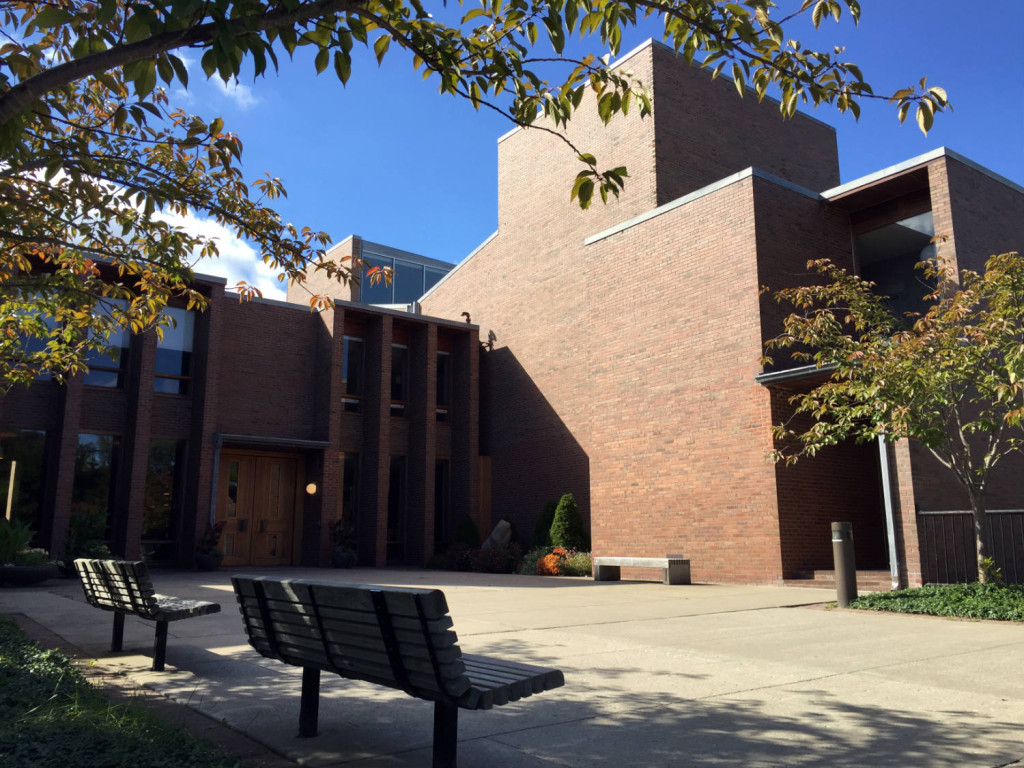
Take A Tour At First Unitarian
Many of the places we visit and the folks we meet are the result of reaching out and simply asking. Sometimes we don’t get responses, or it involves lengthy discussions before they agree to meet with us.
Luckily there are a lot of places that offer regularly scheduled tours. One of those places with free tours is the First Unitarian Church right here in Rochester.
But, the First Unitarian Church is a simple brick building. It’s got square, straight lines and a few windows that aren’t even stained glass. How could they justify having a regular tour of a building that at first glance seems so….common?
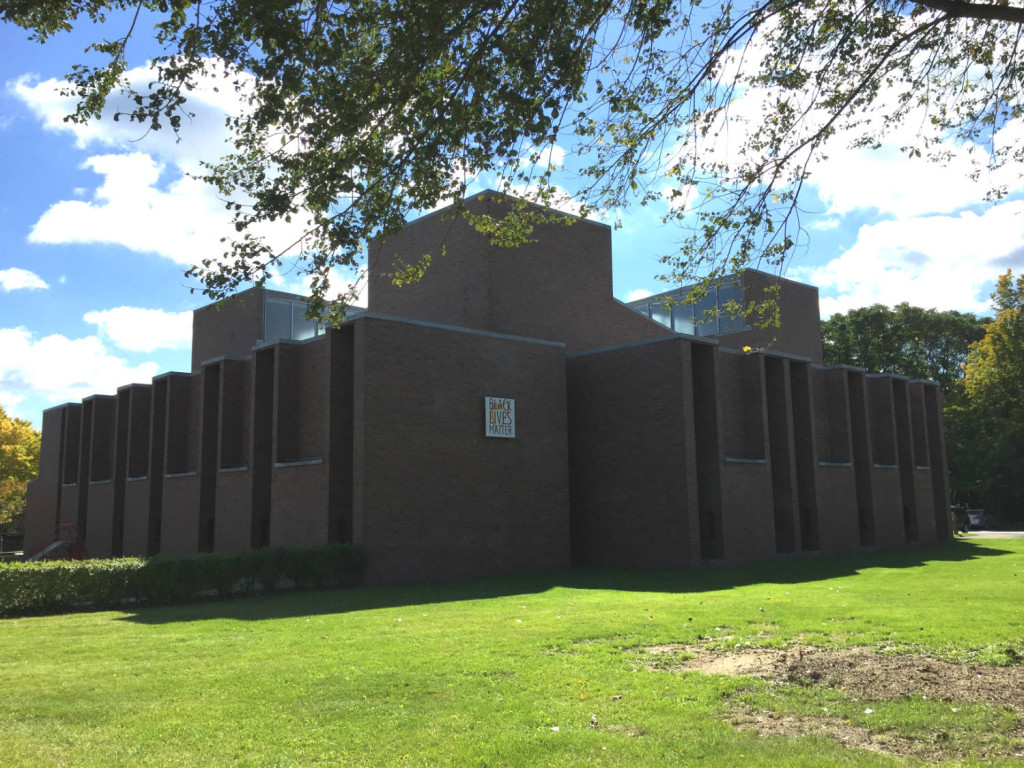
The answer is, almost weekly there are architecture students who visit the church from around the world. Students revere the building and architecture from across seas and make a special trip to Rochester. They’re not here for a Garbage Plate, to see the Eastman House or Erie Canal, but to visit the First Unitarian Church!
The curiosity that has fueled this entire blog led us to Bill, our tour guide at the First Unitarian Church at 220 South Winton Road in Rochester. The First Unitarian Church has one of the best kept and most detailed histories of any of the places we’ve visited.
Which is particularly impressive because it’s lengthy and complex.
Founding First Unitarian
In 1825, a group of Christians found fault in their belief system, particularly struggling with the idea of the Trinity. Out of this reckoning, the concept of Unitarianism was born.
Unitarianism and Universalism would later join forces in the 1970’s. The two religions are now collectively the Unitarian Universalist Association (UUA).
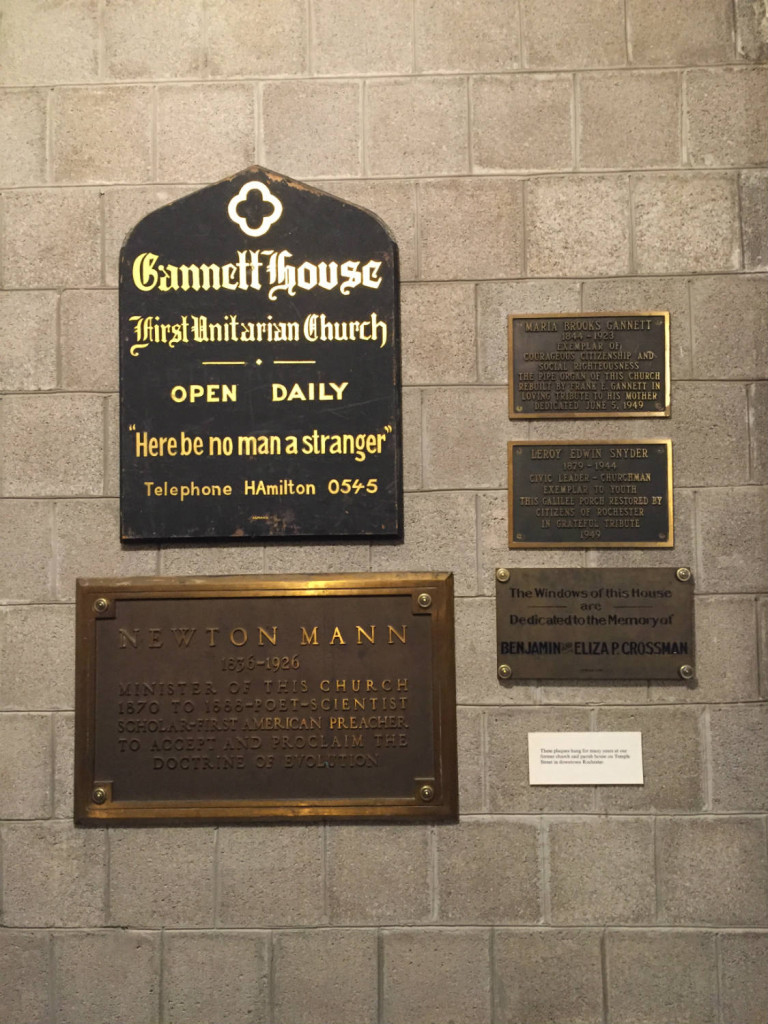
Just four years after its founding, Rochester, New York had its first fellowship of Unitarians. They met under the leadership of Myron Holly, a former Commissioner of the Erie Canal.
During that time, the fervor of the Revivalism movement was stirring many in Central and Western NY to find faith. Unitarianism’s non-creed system of worship made it an attractive way of life for a lot of people.
That fervor led so many to find faith that the figurehead of the Second Great Awakening, Charles Finney, developed the moniker “the burned over district”. His phrasing explained that there was no one left in the Central and Western NY region left to find religion. A number of early influential players in the city of Rochester found themselves leaders in the local Unitarian fellowship.
Early Locations For The Unitarians
The earliest meetings for the new group would take place in the courthouse, but at that time they worked to raise funds for a building of their own. When their fundraising efforts fell short, they instead chose to purchase an existing worship site. The Episcopalians using St. Luke’s had upgraded, making a former church of theirs available. While continuing to raise funds to construct their own church, the Unitarian society purchased the old wooden structure and moved in.
Their fundraising continued with high hopes of constructing their own church. After a number of dedicated years, they finally reached their goal.
They constructed that church at Temple Street where it crossed with Court Street in 1842. Probably the most famous person to attend this church was Susan B. Anthony and according to the First Unitarian Church web site, Susan B. Anthony began “attending services at the First Unitarian Church with her family in the late 1840s. She made it her church home until her death in 1906.
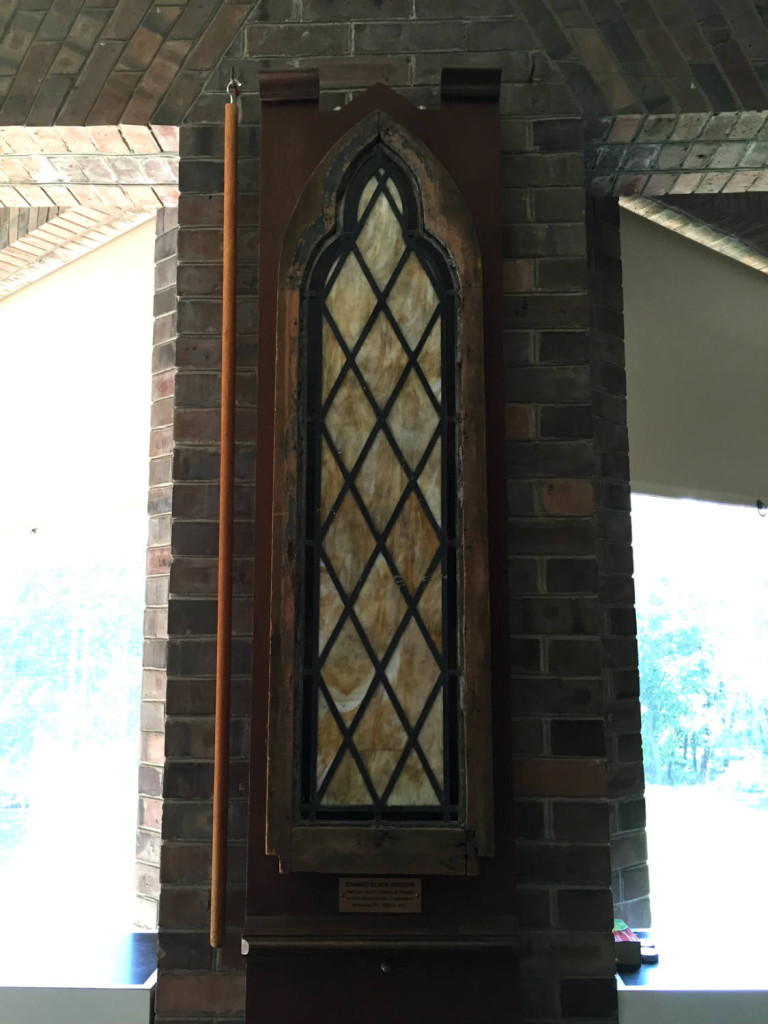
Susan B. Anthony was listed as a member of First Unitarian in a church history written in 1881. She formally signed the membership book in 1893 after a church anniversary celebration and re-dedication. Most already know that Seneca Falls hosted the first women’s rights convention on July 19, 1848. But, the convention reconvened at Rochester’s First Unitarian Church on July 30. It was here that Susan B. Anthony’s father, mother and sister Mary signed the Declaration for Sentiments for women’s Rights.
Temple Street and the Unitarian Church were later demolished. The demo was to make way for what was believed to be a better system to navigate the growing city. In addition, they built a state of the art, one of a kind mall named “Midtown”. That mall was also later demolished.
First Unitarian Church Of Rochester Finds A New Home
Without a place to worship, the congregation set out to choose a new home with more a permanent future. The congregation locked the doors one last time on Temple Street in 1959. They met in various places until the completion of their current home in 1962.
Louis Kahn was one of a number of architects considered to design the new building. His dedication to modern architecture, a personal philosophy that naturally aligned with the beliefs of Unitarianism, and his commitment to building each new building as an entirely unique project won him the faith of the congregation.
After first being approached in 1959, and scrapping the first design concept that the congregation didn’t approve of, the current design was agreed upon. The church’s committee for the new project was very involved. Apparently they and Kahn developed a real nice collaborative relationship throughout the process.
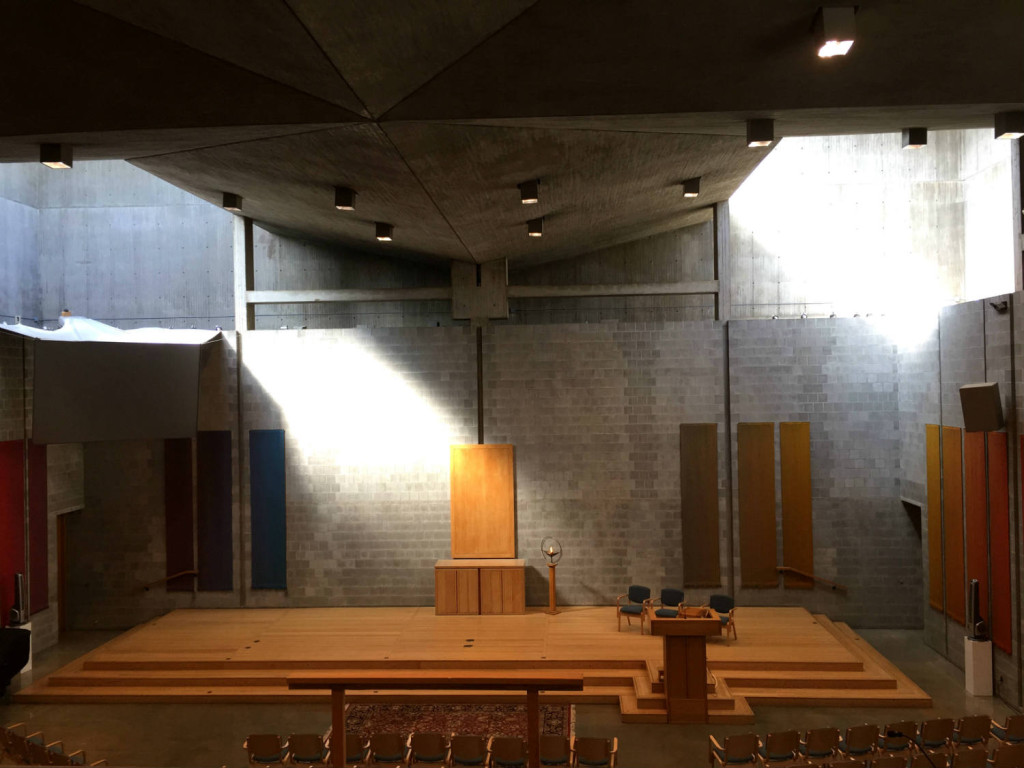
An idea of Kahn’s that “civilization is measured by the shape of your ceiling” is clear in the sanctuary. When you first enter, you pass under the choir loft immediately casting a shadow overhead. But when you pass under it in to the sanctuary, the natural light from the ceiling immediately opens the room. That concept of passing through shadow in to light was done on purpose.
More From Inside
The walls are exposed grey cinder block from floor to ceiling that normally I’d think was cavernous and cold, but the light passing through the towers in each corner warms the space. The only decoration in the entire space is a series of woven tapestries on the wall, and a rotating art exhibit facing the congregation, and a Unitarian chalice piece under that. While designing the church, Kahn asked himself what he thought to be important in a church, and decided it was “silence and light”, and later expanded on the design process in the publication Form and Design,
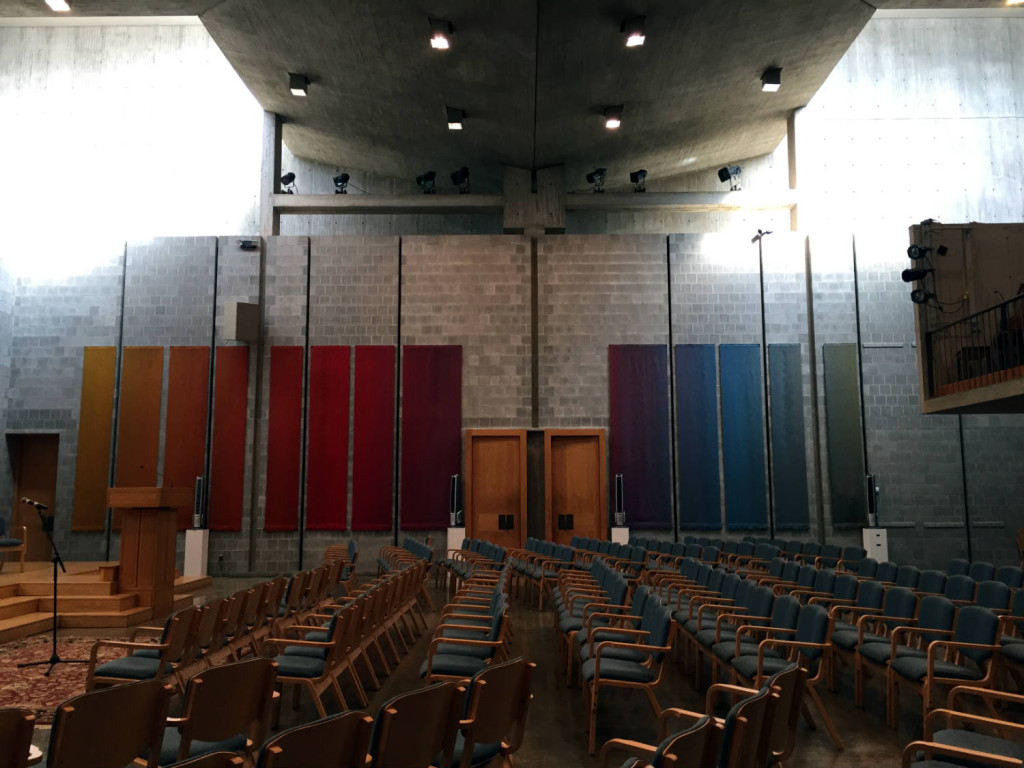
“A great building, in my opinion, must begin with the unmeasurable, must go through measurable means when it is being designed and in the end must be unmeasurable … But what is unmeasurable is the psychic spirit.“
As we walked around the building with Bill explaining the subtle nuances of the architecture and design, people began to fill in the church and get ready for the service. What was particularly notable about the attendees is that they were generally pretty young. Most of the places we visit, particularly places with a ‘Western’ religious affiliation, there is a much older and sometimes even primarily elderly fellowship, so seeing many of the people walking in that appeared to be well under 30 was something to take notice of. In fact, I ran into a high school friend that I hadn’t seen in years!
Wrapping Up
Bill walked us around the outside of the building as well and wrapped up the tour so he could get to service himself. We said our thanks and goodbyes, and made recommendations to the visiting couple on where we felt they should visit while they were in town.
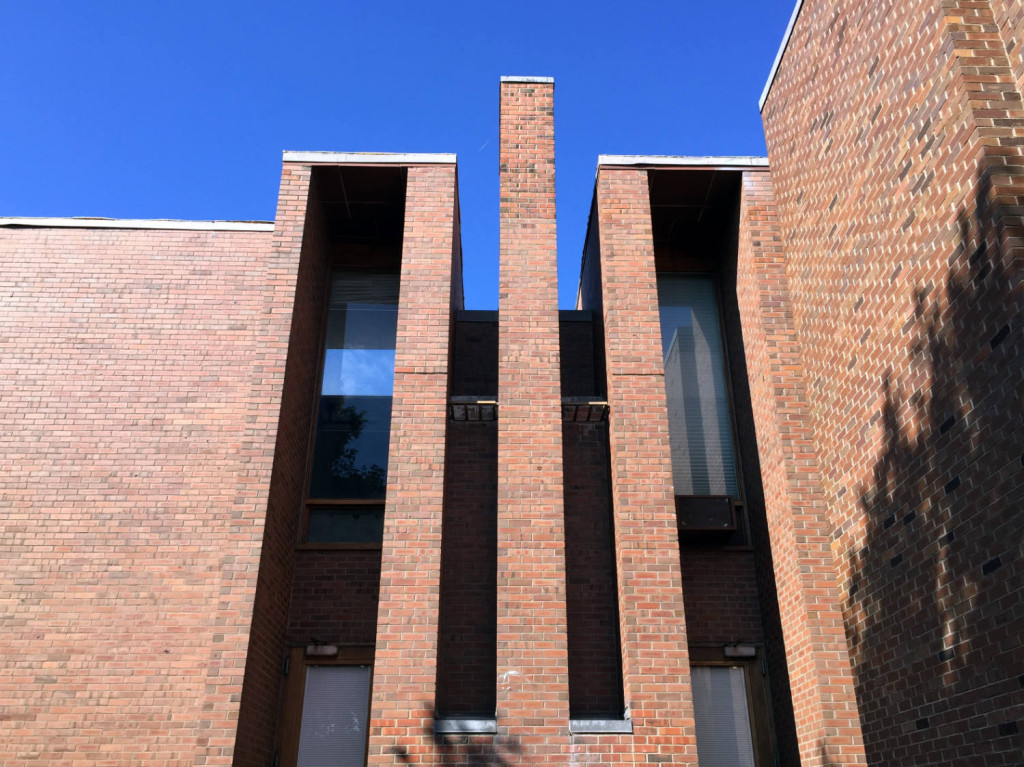
The First Unitarian Churches is one of those places that even having lived in Rochester, NY for 33 years, I’ve never given it a second look while driving past. After doing the research and making a point to learn more, we left with an entirely new appreciation for the space, and the folks who inhabit it, and their lengthy history that has helped shaped the culture of Upstate New York.
*This post previously appeared on ExploringTheBurnedOverDistrict.com
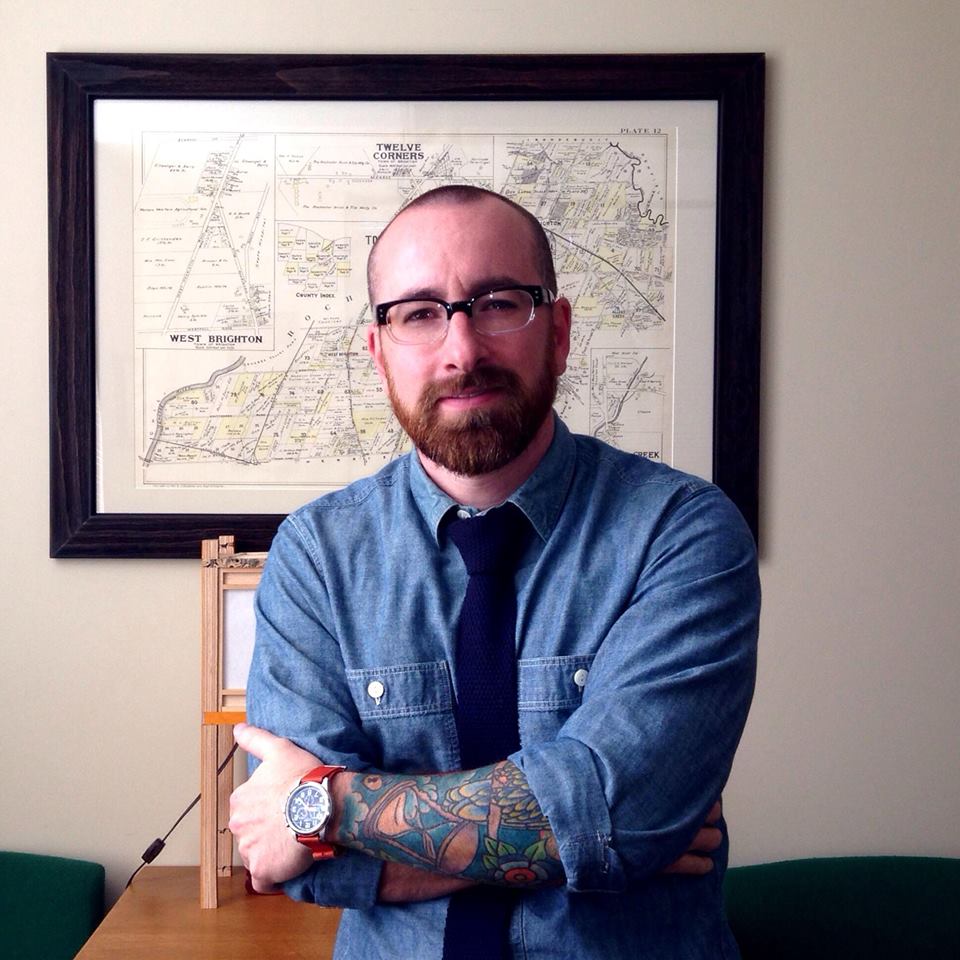
Chris Clemens is the Founder/Publisher of Exploring Upstate. From his hometown in Rochester, he spends as much time as possible connecting with the history, culture, and places that make Upstate New York a land of discovery. Follow him on Twitter at @cpclemens

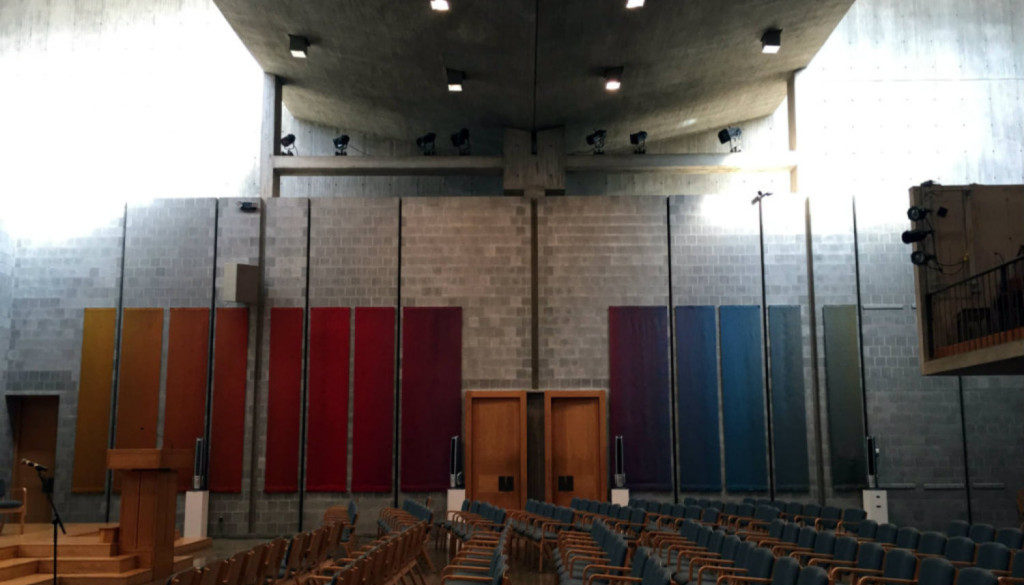
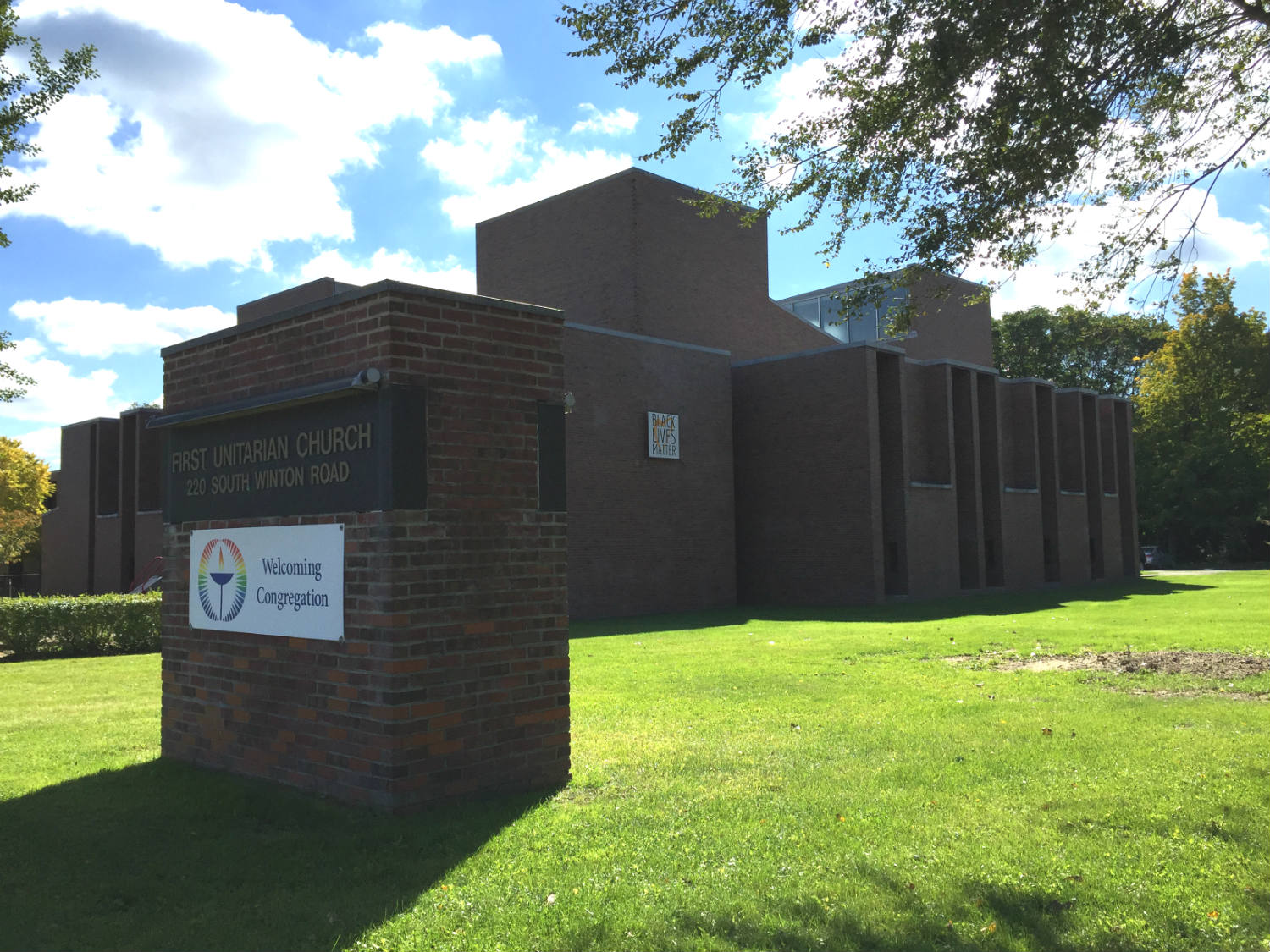
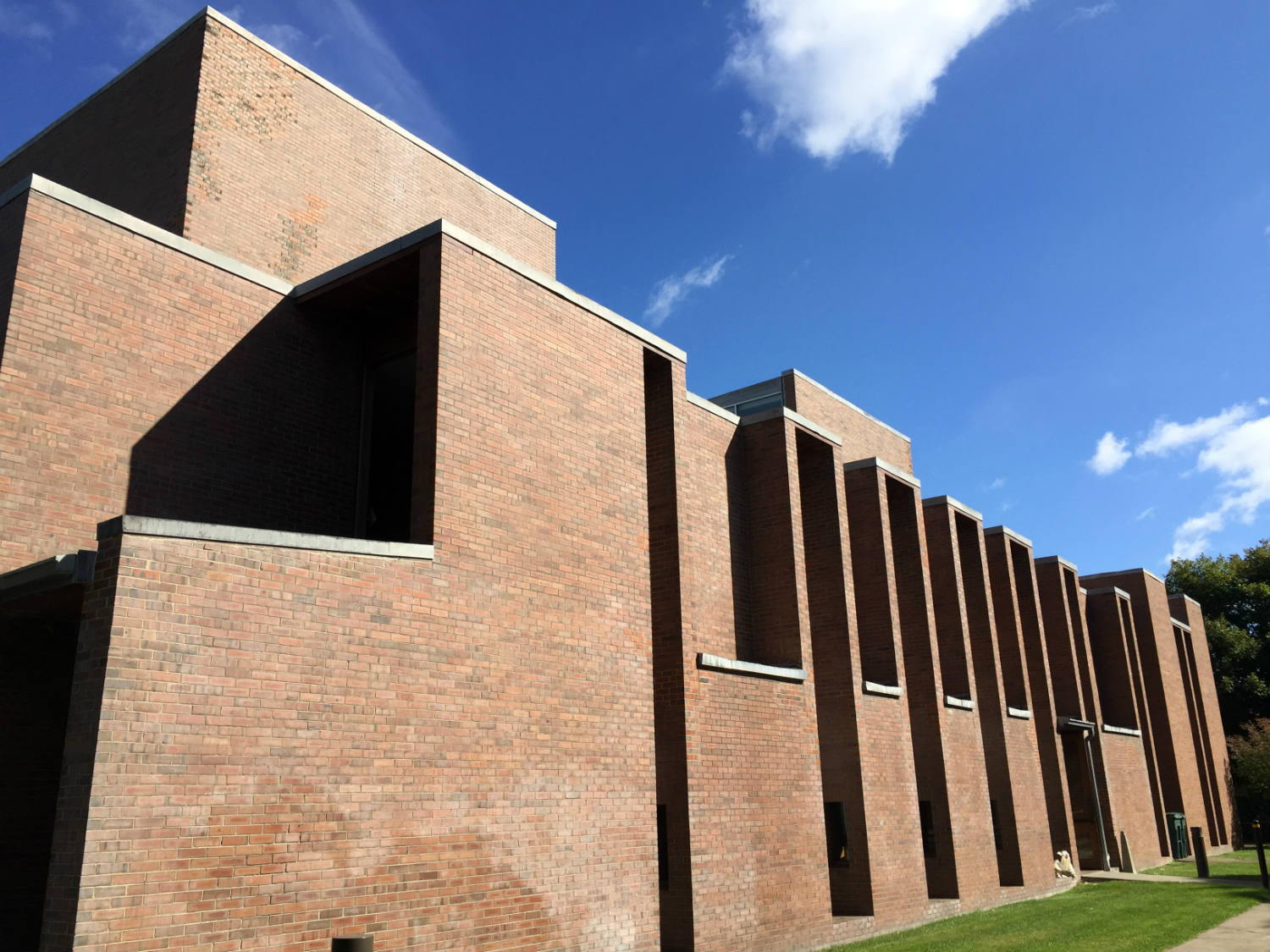
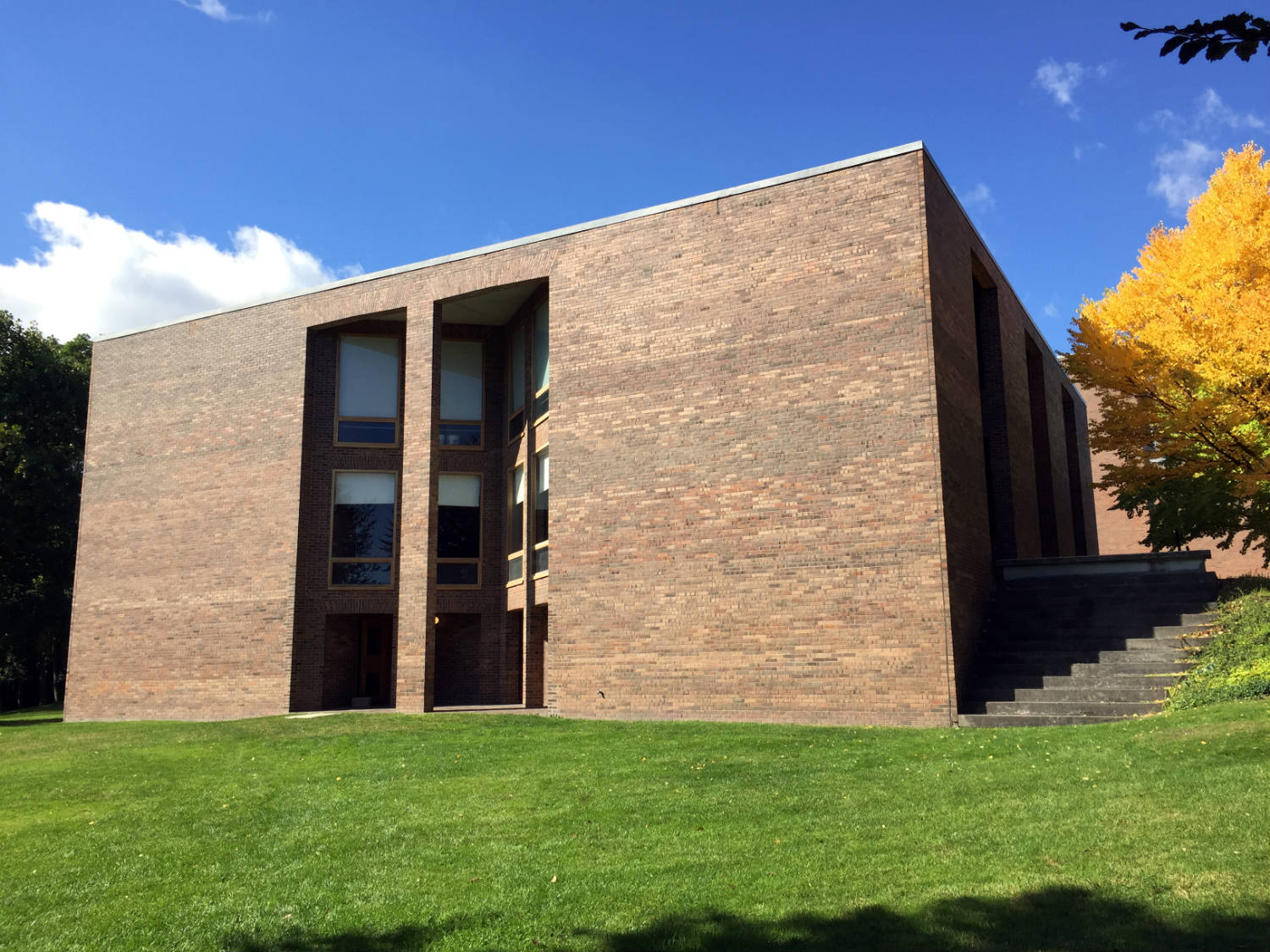
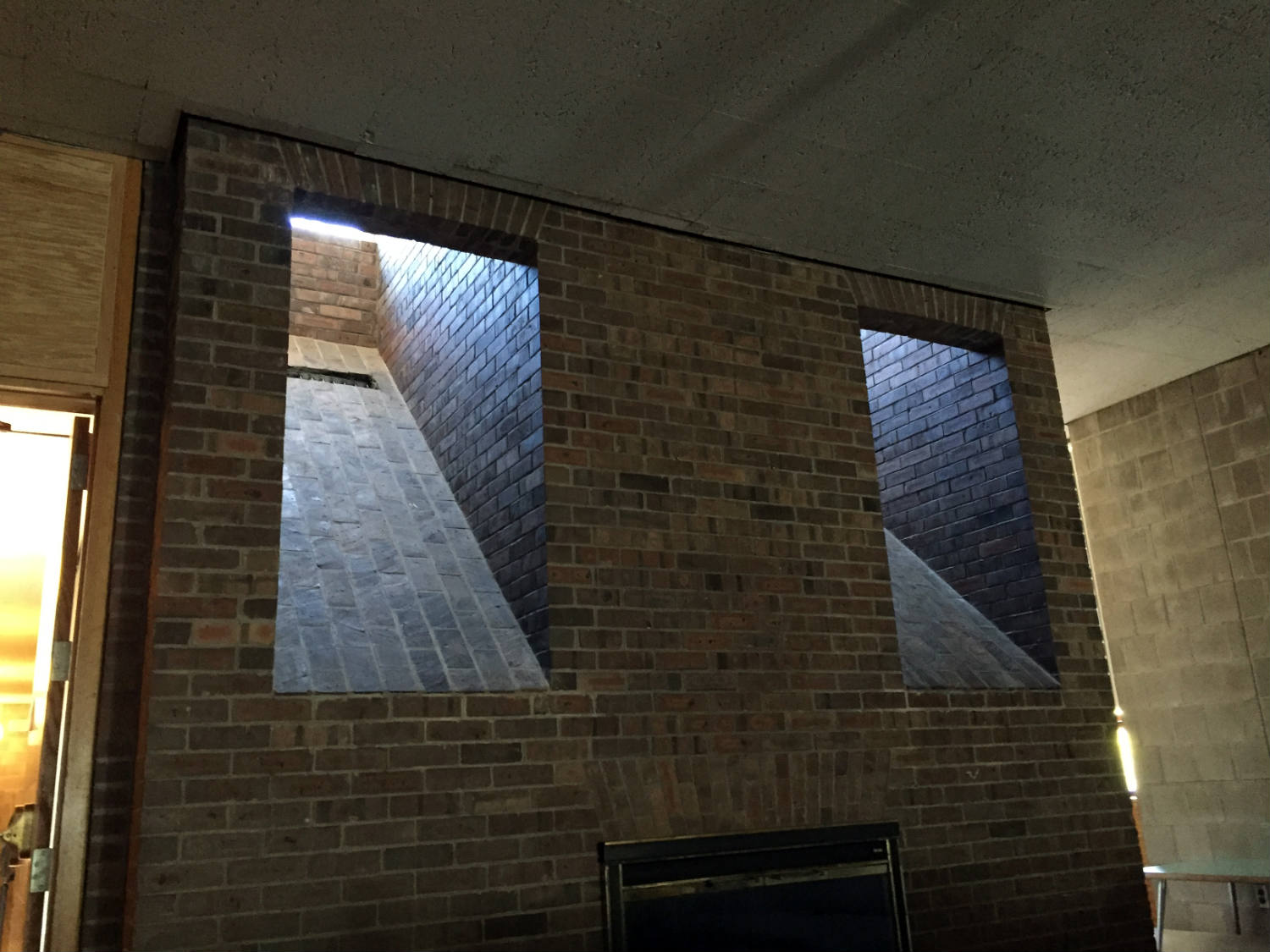
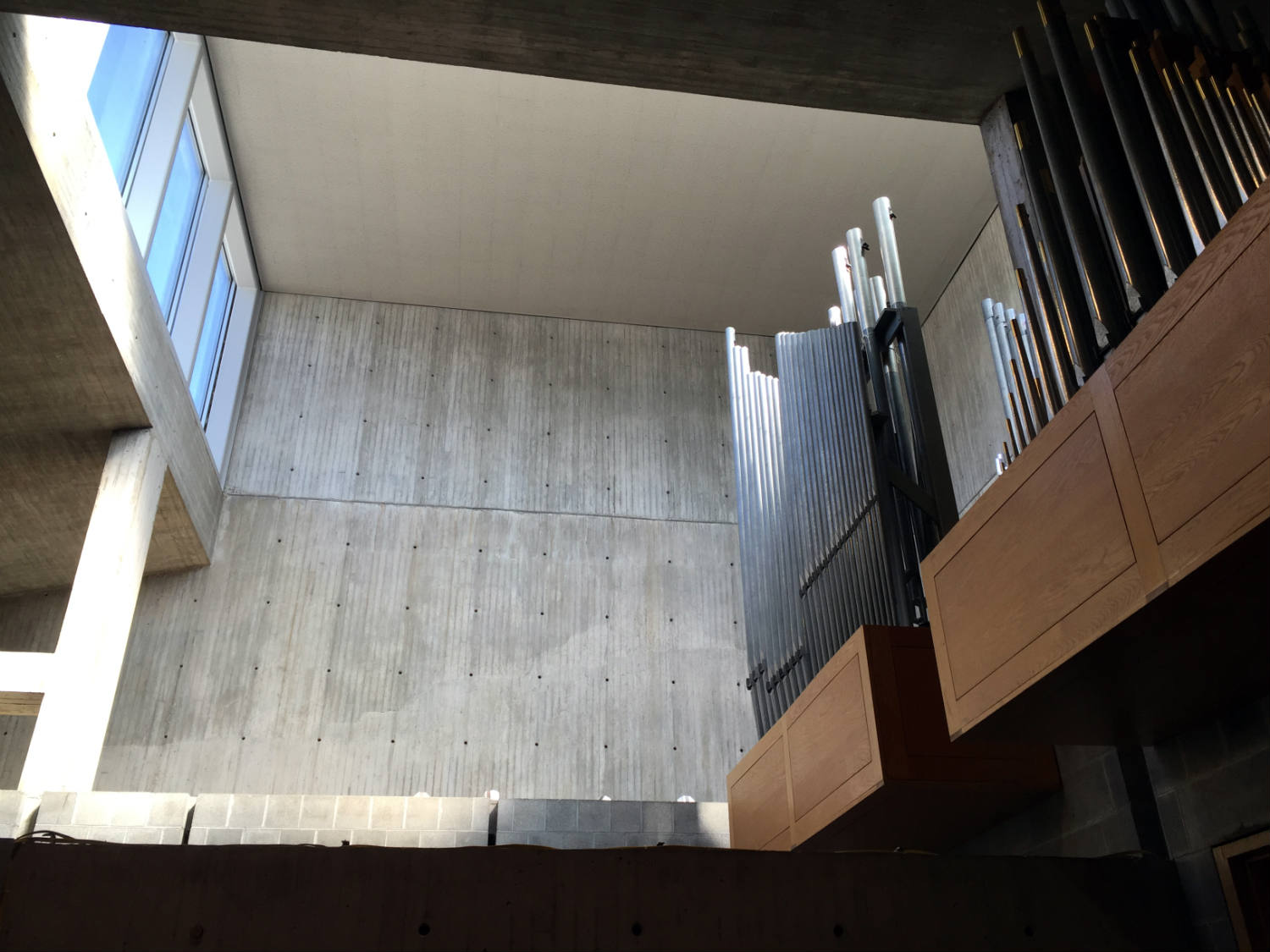
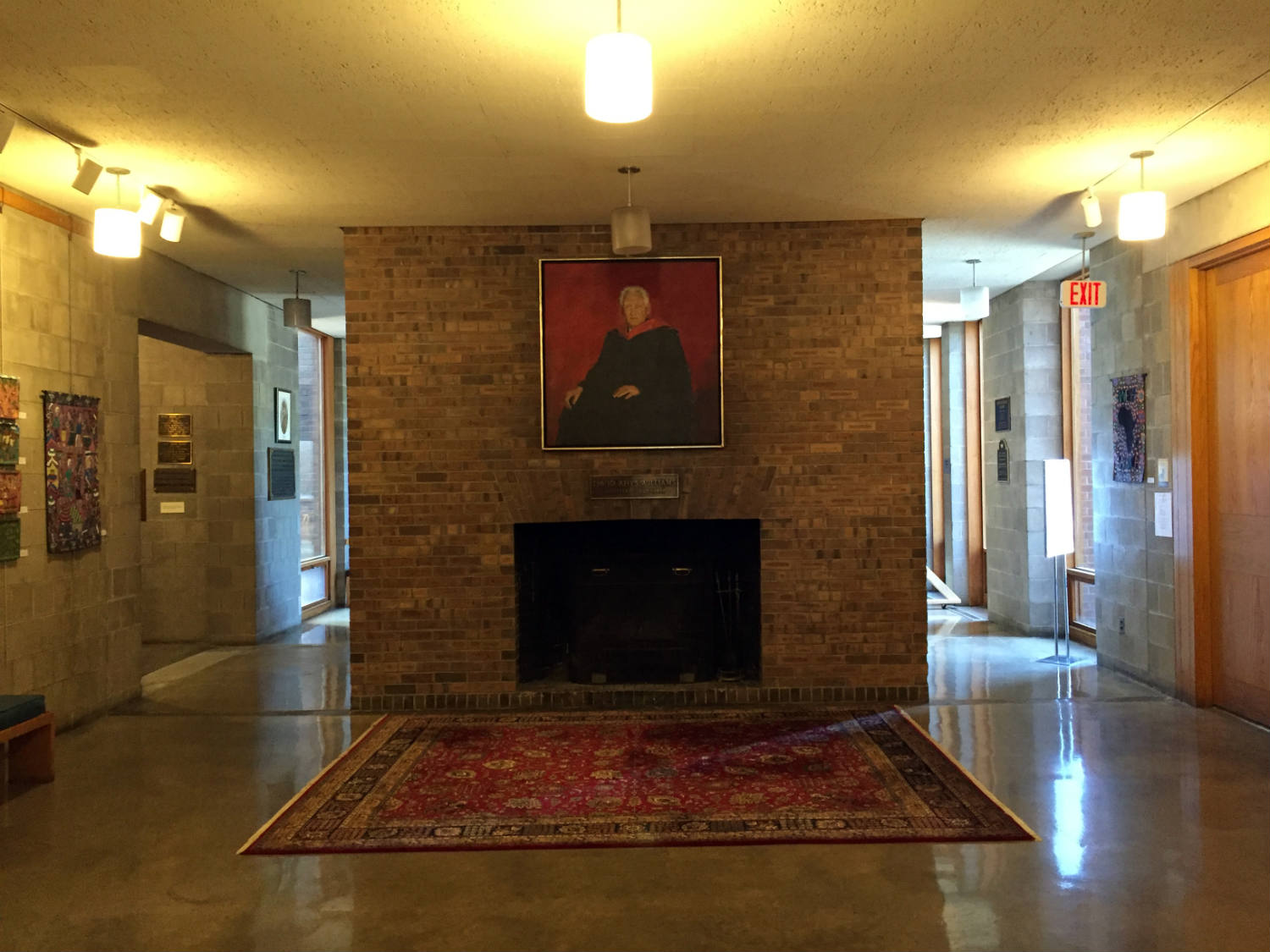
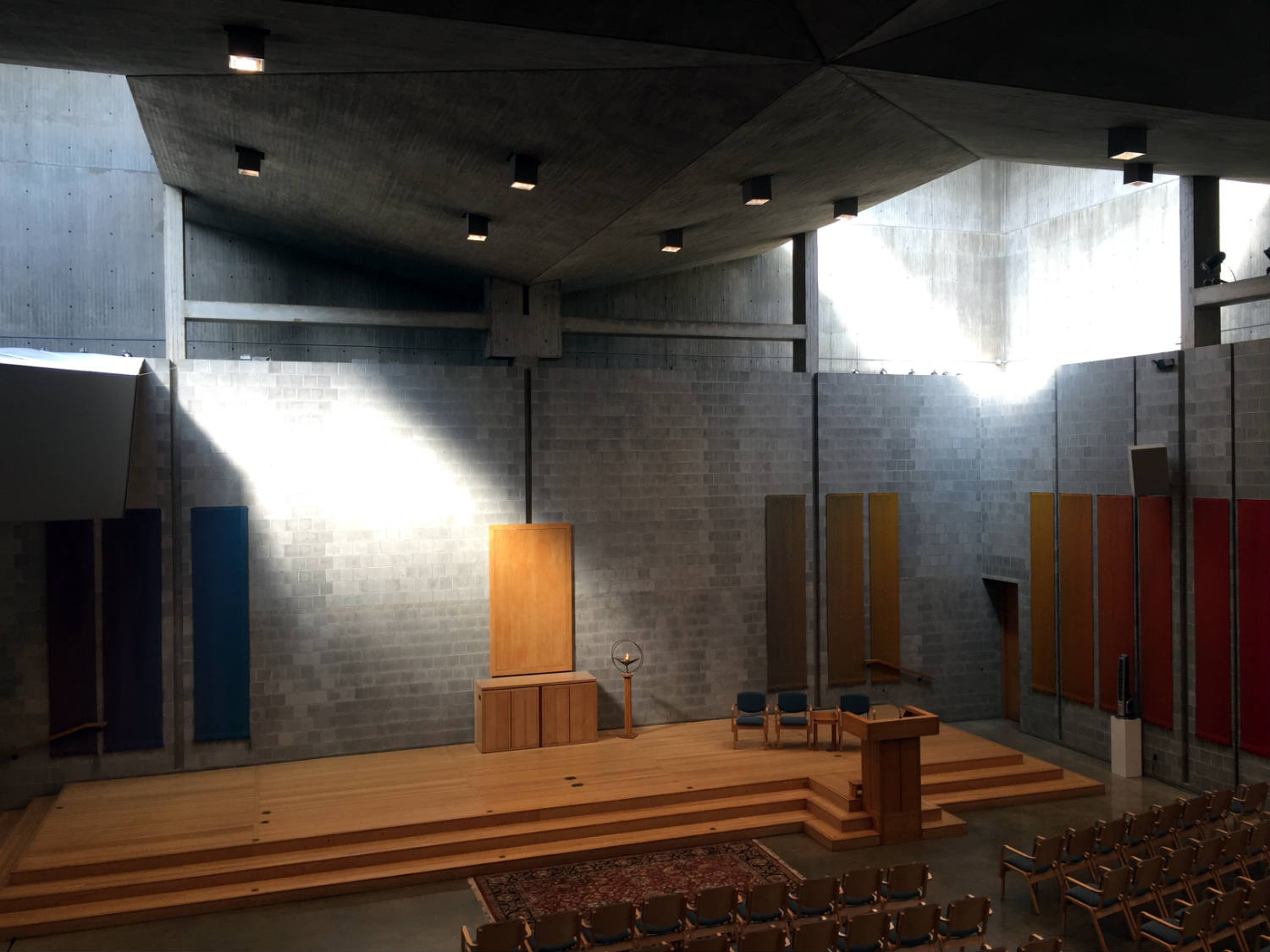
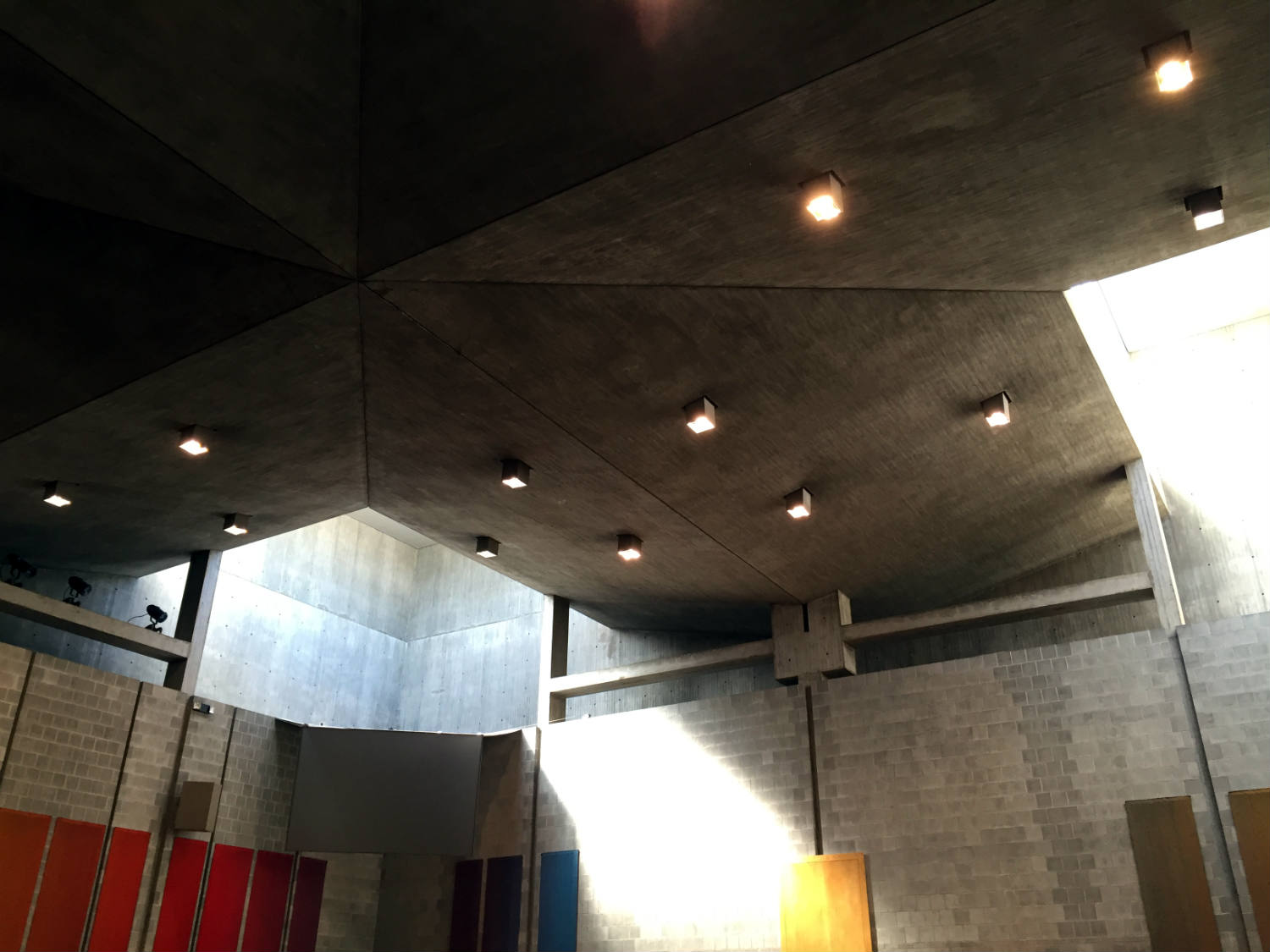
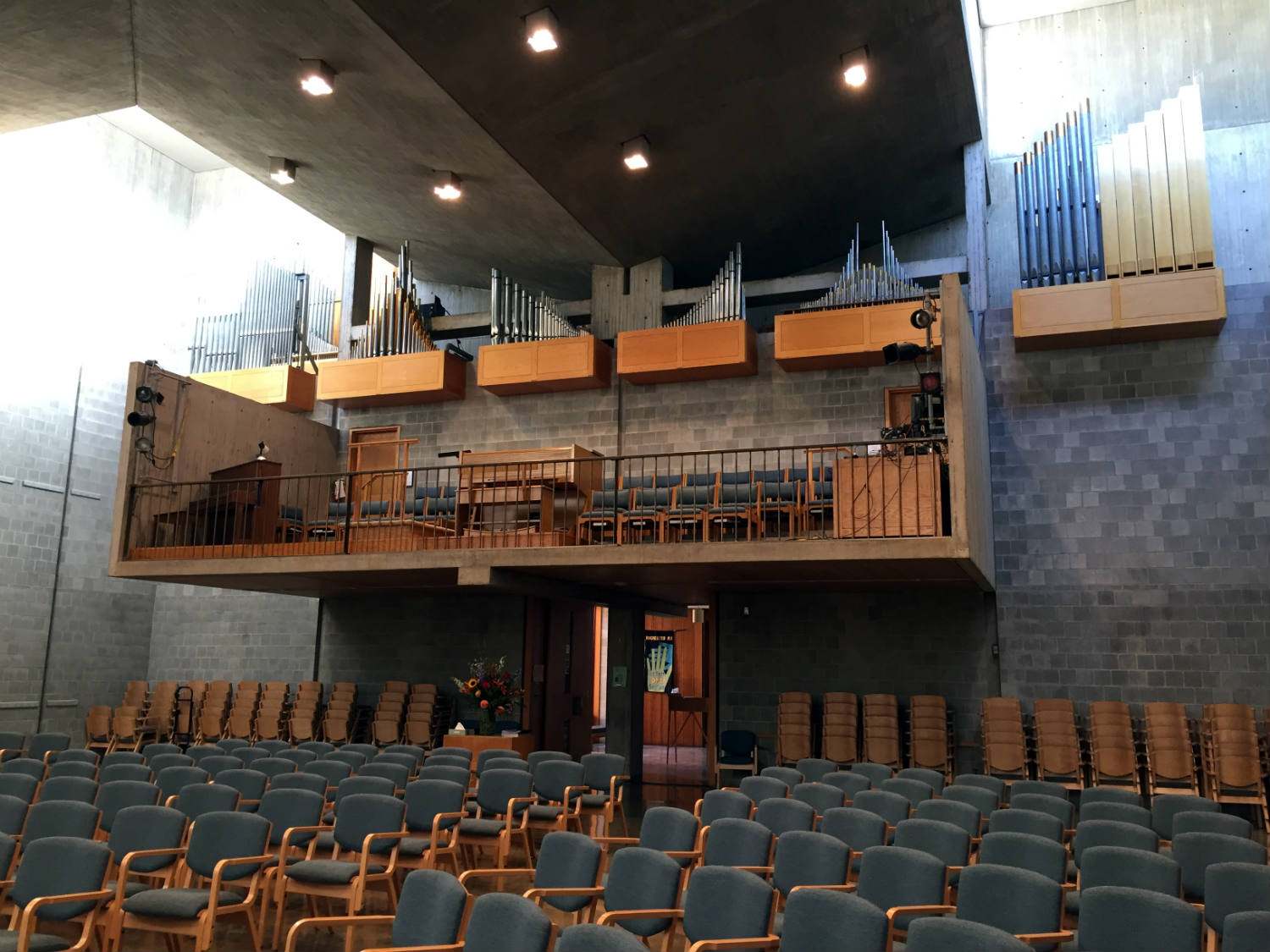
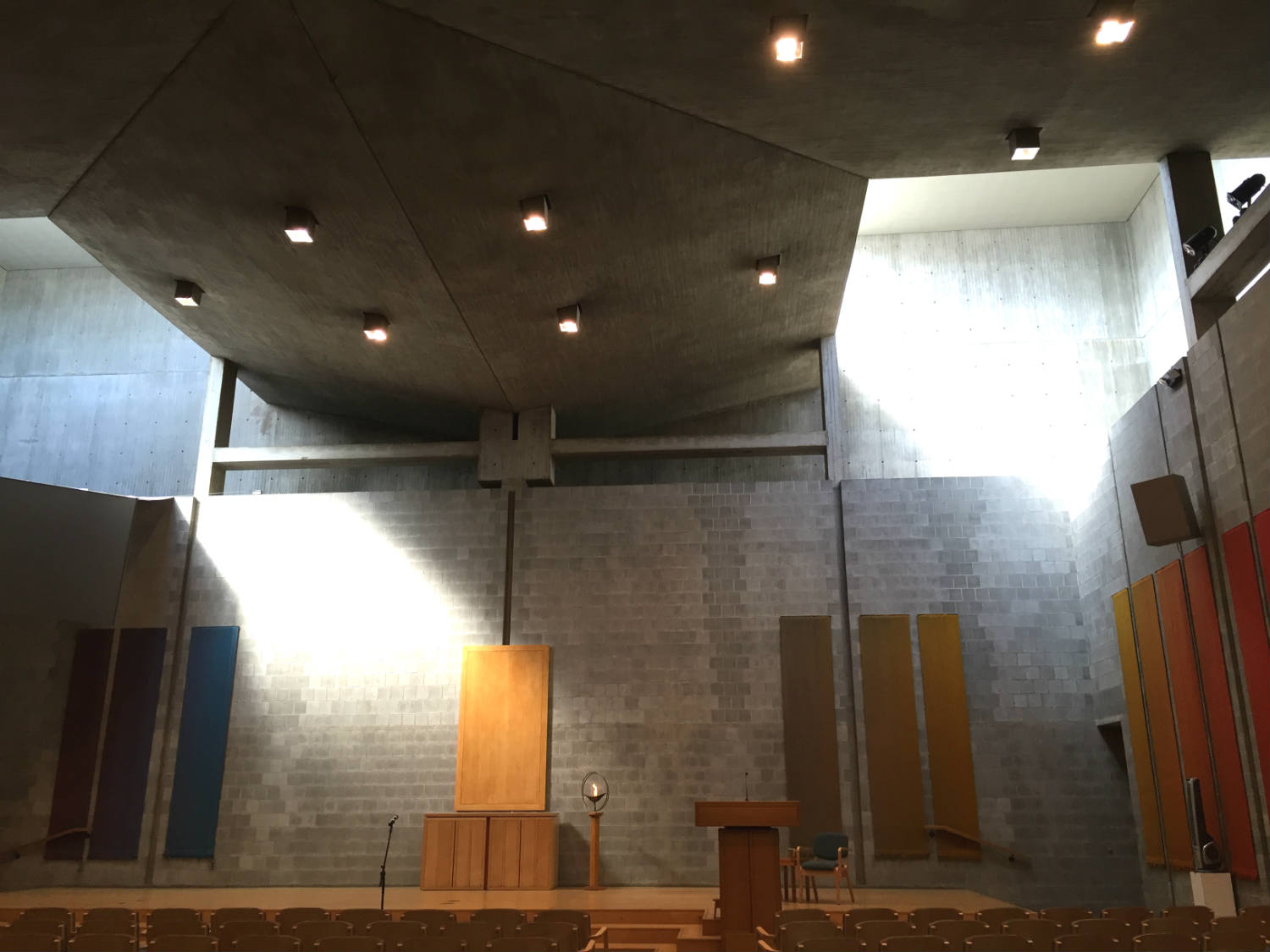
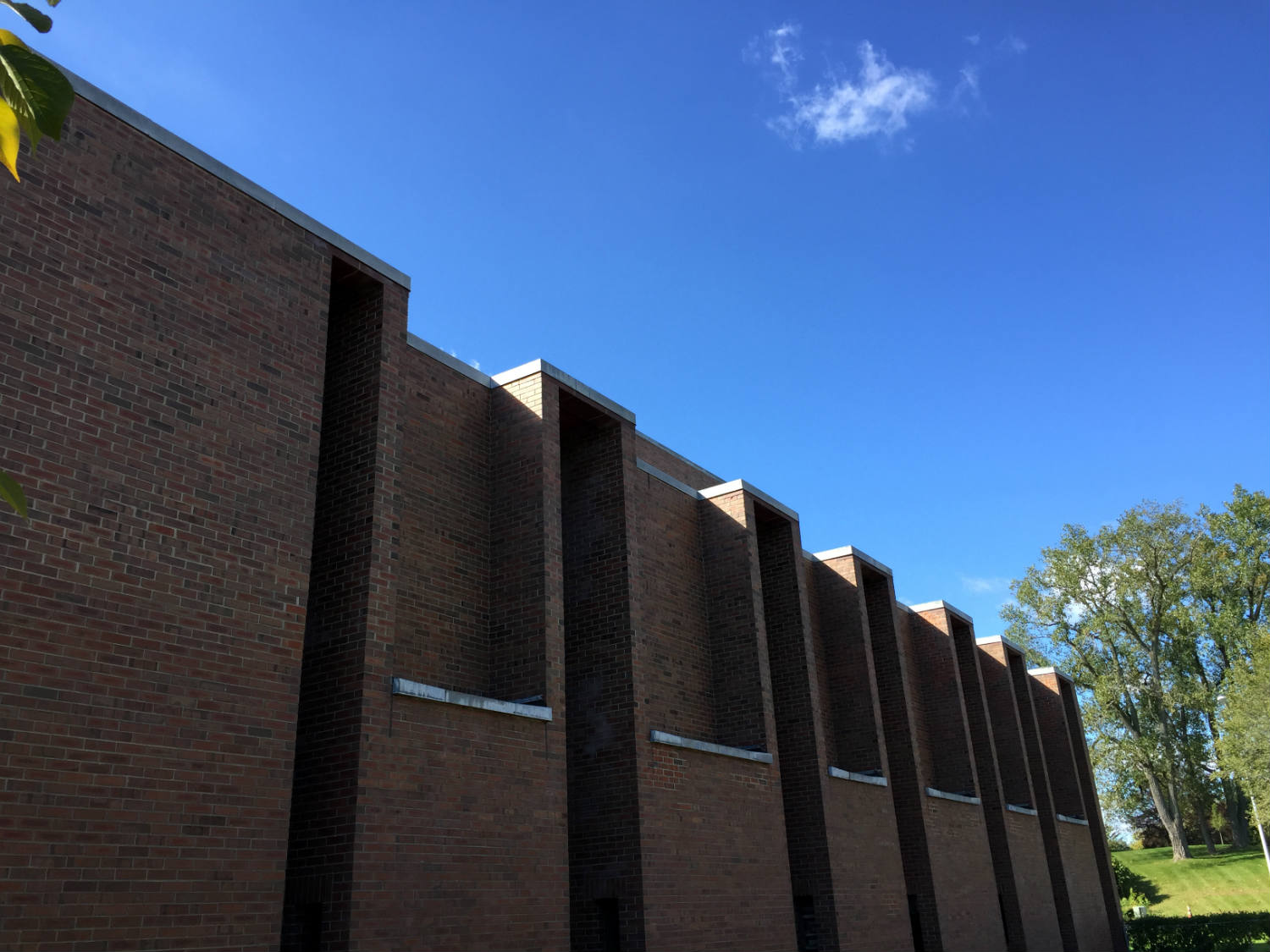
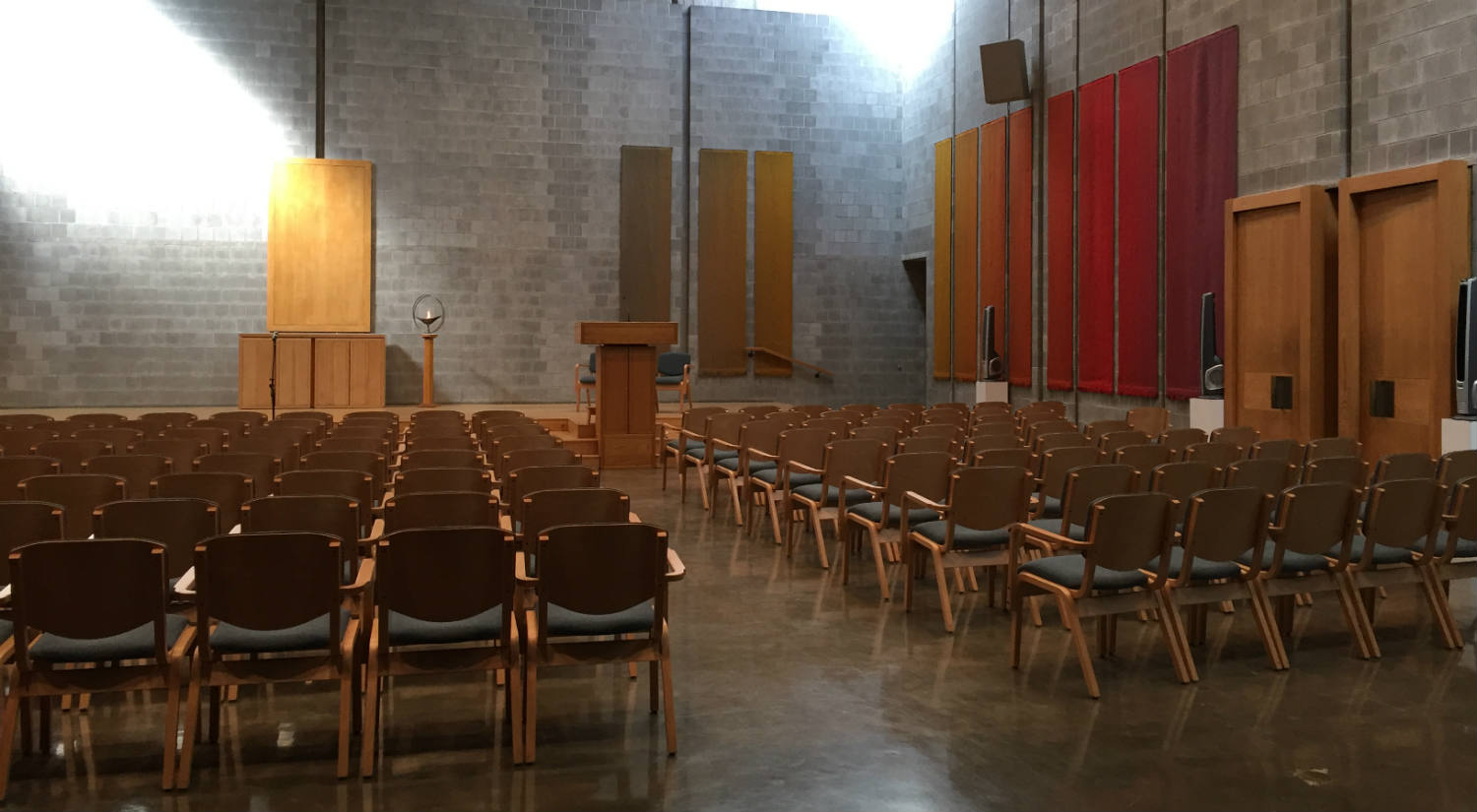


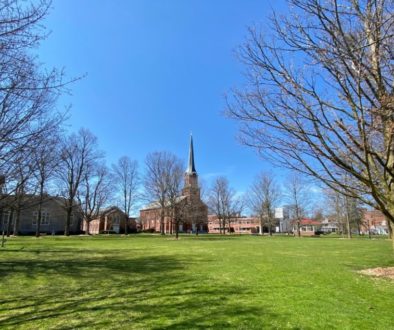

November 24, 2012 @ 7:48 pm
Very well written and interesting Chapter of your informative hobby son!
November 28, 2012 @ 4:30 pm
Doesn’t get better than a compliment from your own father! Thanks Dad. 🙂
November 27, 2012 @ 3:20 pm
The Unitarian faith actually has a much longer history than from 1825 in the U.S. The Edict of Torda is considered by most to be the start of the faith. The Edict signified religious freedom was delivered by King John Sigismond, the Polish born king of Transylvania, Romania in 1568. The faith has a long, complex history before it reached the U.S.
November 28, 2012 @ 4:29 pm
Great point Janice, thanks for passing this along. There’s definitely quite a bit more reading for us, and visitors to our site to check out. Thanks for steering us in a good direction!
November 30, 2012 @ 11:05 am
Chris or Luke, can one of you guys call m about this project? Jeff Spevak, Democrat and Chronicle
March 12, 2013 @ 11:53 am
Unitarians also have a long and interesting history in England . Persecuted Unitarians spread out from Eastern Europe eventually also settling in the US..
Universalists: Think upstate ny.
Unitarians: Think Eastern Europe .
June 28, 2013 @ 8:15 am
We have a new book “The Coming Interspiritual Age”
By Kurt Johnson and David Ord. Its a book you will want
to read. If you are interested in the Intersprititual Movement
this book is for you.
go to http://www.namastepublishing.com
May 29, 2014 @ 9:38 am
Very nice post. I thought you might be interested to know that this church may soon be on the National Register of Historic Places. You can currently read the official nomination online:
http://nysparks.com/shpo/national-register/documents/nominations/FirstUnitarianChurchRochesterMonroeCo.pdf